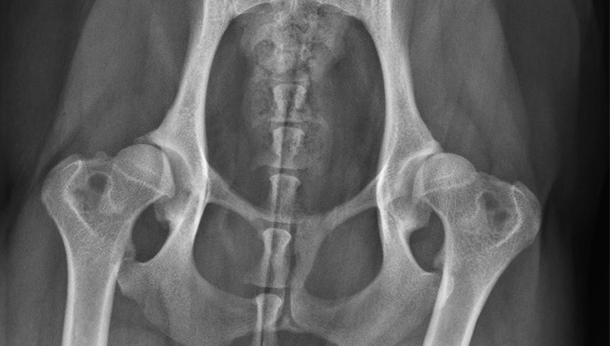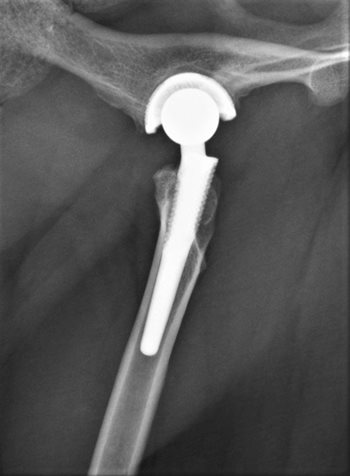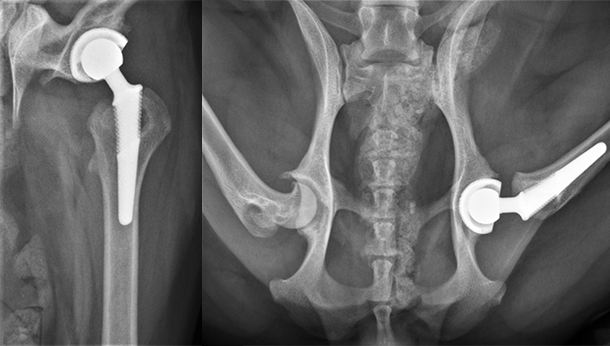Written by Juan M. Marti LV Cert SAO MVM DipACVS DipECVS MRCVS RCVS, American and EBVS® European Specialist in Small Animal Surgery
Elsa is a 1-year old, female, Cockerpoo which was evaluated for clinical signs, such as bunny hopping, hind limb stiffness and lameness, which the owners had noticed when she was only a few months of age. They had suspected hip dysplasia and she was first treated with oral anti-inflammatories and analgesics after an initial exam at the local vets, who confirmed hip dysplasia on a physical and radiographic examination. At the time, she was only able to exercise for about 15 minutes on the lead, several times a day, but showed stiffness after rest, perhaps worse on the left side. Despite medical management, she continued showing problems and not being able to keep up with other dogs at playtime.
On exam with us, she showed no obvious lameness or neurological deficits, although bilateral, symmetrical hind limb lameness was suspected. The owners reported that, historically, her left side had shown worse signs of lameness and stiffness. Muscle mass was deficient, bilaterally and symmetrically in both thighs and she shows clear discomfort on manipulation of both hips. The rest of the ortho exam is unremarkable. Under sedation, she was examined again, showing mild bilateral Ortolani sign on both hips, less defined on the left side. Her stifles were unremarkable and the rest of her ortho exam was within normal limits.

Photo 1
Radiographs were obtained for a THR evaluation on the left side (PHOTO 1) and were measured for an uncemented hip replacement (Biomedtrix). Her small bone size made the smallest commercially available uncemented acetabular BFX cup oversized for her, so we investigated the possibility of obtaining a bespoke, smaller cup from the manufacturer. This would avoid placing a cemented hip replacement, which can produce long-term complications related to the cement, especially in young patients.

Photo 2
After a few weeks of waiting, Elsa was taken to surgery and her uncemented BFX total hip replacement went very well (PHOTO 2). She was discharged the following day with strict instructions to rest for 4 weeks, at which point, she was evaluated again for radiographic examination. On her 4-week follow up, Elsa looked great, walking with no lameness, with good muscle mass on the operated limb and great range of motion in her new hip. Radiographs showed no changes in the position of the cup and the stem, suggesting early osteointegration of these implants to the bone (PHOTOS 3,4)

Photos 3 & 4
Elsa’s exercise was then gradually increased over the following two months until she was seen again three months after the surgery. At this point, she was doing extremely well, on no medication and her lead exercise was up to 45-minute walks and off-lead exercise was started. Elsa continued on to a full recovery on the operated limb but the owners started to appreciate a lameness on her right hind limb, so it is very likely that a similar surgery will be done soon on her other hip, to give her a full quality of life.